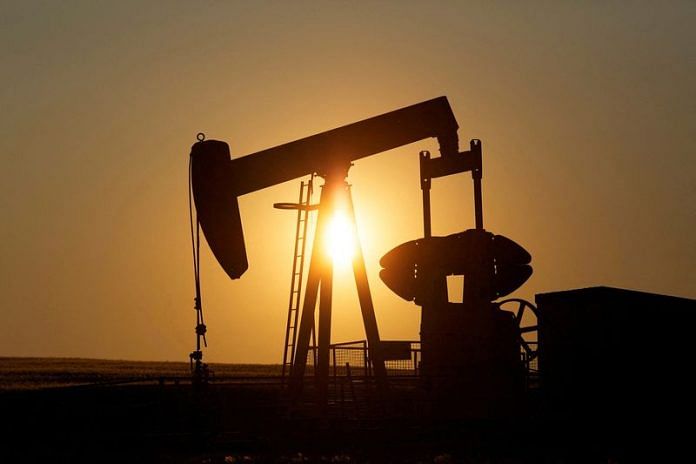
(Reuters) – The world’s biggest oil and gas companies have set varying targets to reduce greenhouse gas emissions from their operations and the combustion of the products they sell. On Tuesday, Shell won an appeal against a landmark 2021 ruling that required it to cut its absolute carbon emissions by 45% by 2030 compared to 2019 levels, including those caused by the use of its products. Scientists say the world must cut greenhouse gas emissions by around 43% by 2030 from 2019 levels to stand any chance of meeting the 2015 Paris Agreement goal of keeping warming well below 2 degrees Celsius (3.
6 Fahrenheit) above pre-industrial levels. Direct comparisons of the oil companies’ climate plans are difficult as they emphasise different approaches to intensity-based targets and how to include greenhouse gases from the combustion of their fuels – known as Scope 3 emissions. Intensity-based targets measure the amount of greenhouse gas (GHG) emissions, such as methane and carbon dioxide, per unit of energy or barrel of oil and gas produced.

That means absolute emissions can rise even if the headline intensity metric falls – for example with the addition of renewables or biofuels to the product mix. Reducing emissions will require a well-functioning market for carbon, the scaling up of carbon capture and storage technology, and the development of competitive uses of hydrogen, many of the companies have said. The table below shows details by company (in alphabetical order).
Targets 2030 Absolute Intensity- 2050 Details Scope 2030 based 2030 target 1+2 reduction reduction reducti incl. Scope incl. on 3 Scope 3 BP 50% vs 20%-30% vs 15%-20% vs net Has 2019 2019 2019 zero abandoned (excludes (includes company goal to cut fuel sold all fuel oil and gas by BP but sold by BP output by derived even if 25% by 2030 from oil derived vs 2019 produced by from oil others) produced by others) Chevron 35% oil no 5% by 2028 net Guides more and gas vs 2016 zero than 3% upstrea Scope 1 annual m and 2 growth of intensi aspirat oil and gas ty to ion output by 24 kg (upstre 2027 CO2e/bo am) e by 2028 vs 2016 ConocoP 40%-50% no no Net Does not hillips vs zero set any 2016 Scope 1 Scope 3 and 2 targets Eni net 35% vs 2018 15% vs net Expects zero (includes 2018 zero hydrocarbon fuel sold (includes company production by Eni fuel sold to grow produced by by Eni 3%-4%/yr others) produced between by 2022 and others) 2026 and then stay flat until 2030, with gas accounting for 60% of output by then Equinor 50% vs no 20% vs net Sees 2030 2015 2019 zero oil and gas (operat company output on ed par with assets) 2022 when it was around 2 mln boed.
Expects oil output to grow to 2026, then decline. Exxon 20% no no net Does not corpora zero set any te-wide Scope 1 Scope 3 emissio and 2 targets ns (or of 23 mln operate Add 500,000 t) vs d boed output 2016; assets by 2027 to 30% reach 4.2 reducti mln boed on in upstrea m busines s (or 15 mln t) Repsol 55% vs 30% vs 2016 28% vs net Under 2016 by (excludes 2016 zero nations’ 2025 fuel sold (excludes company currently by Repsol fuel sold announced but derived by Repsol climate from oil but pledges, produced by derived Repsol others) from oil expects to produced produce by 350,000-400 others) ,000 boed in 2050 Repsol expects oil refining to fall 80%-90% by 2050 Shell 50% vs Ambition to 15% to 20% Net Has ruled 2016 reduce vs 2016 zero out setting customer (includes company absolute emissions all fuel emissions from use of sold by cuts oil Shell) targets for products by 2030 15% to 20% vs 2021 TotalEn 40% vs Disclaimer: This report is auto generated from the Reuters news service.
ThePrint holds no responsibilty for its content. var ytflag = 0;var myListener = function() {document.removeEventListener('mousemove', myListener, false);lazyloadmyframes();};document.
addEventListener('mousemove', myListener, false);window.addEventListener('scroll', function() {if (ytflag == 0) {lazyloadmyframes();ytflag = 1;}});function lazyloadmyframes() {var ytv = document.getElementsByClassName("klazyiframe");for (var i = 0; i < ytv.
length; i++) {ytv[i].src = ytv[i].getAttribute('data-src');}} Save my name, email, and website in this browser for the next time I comment.
Δ document.getElementById( "ak_js_1" ).setAttribute( "value", ( new Date() ).
getTime() );.














